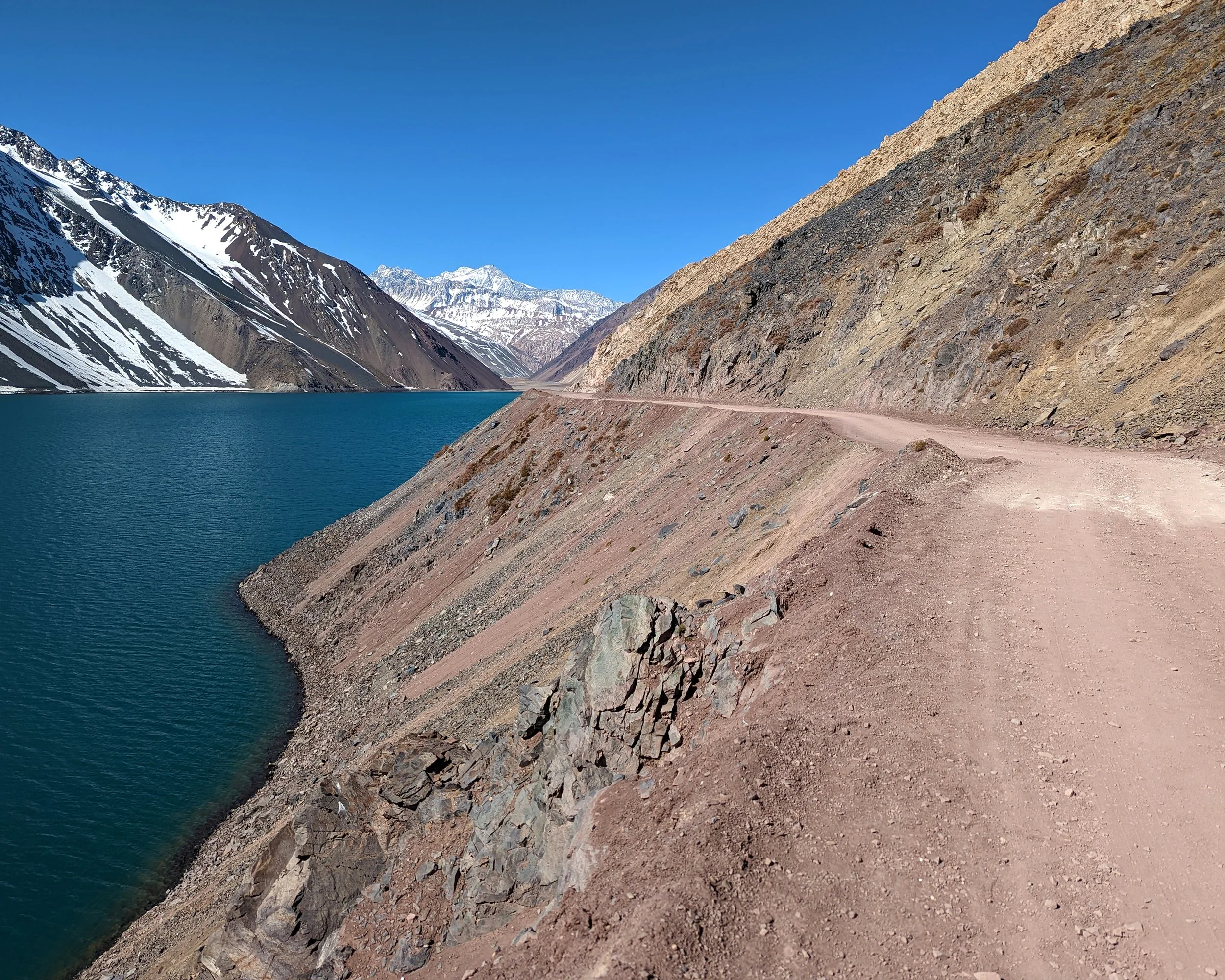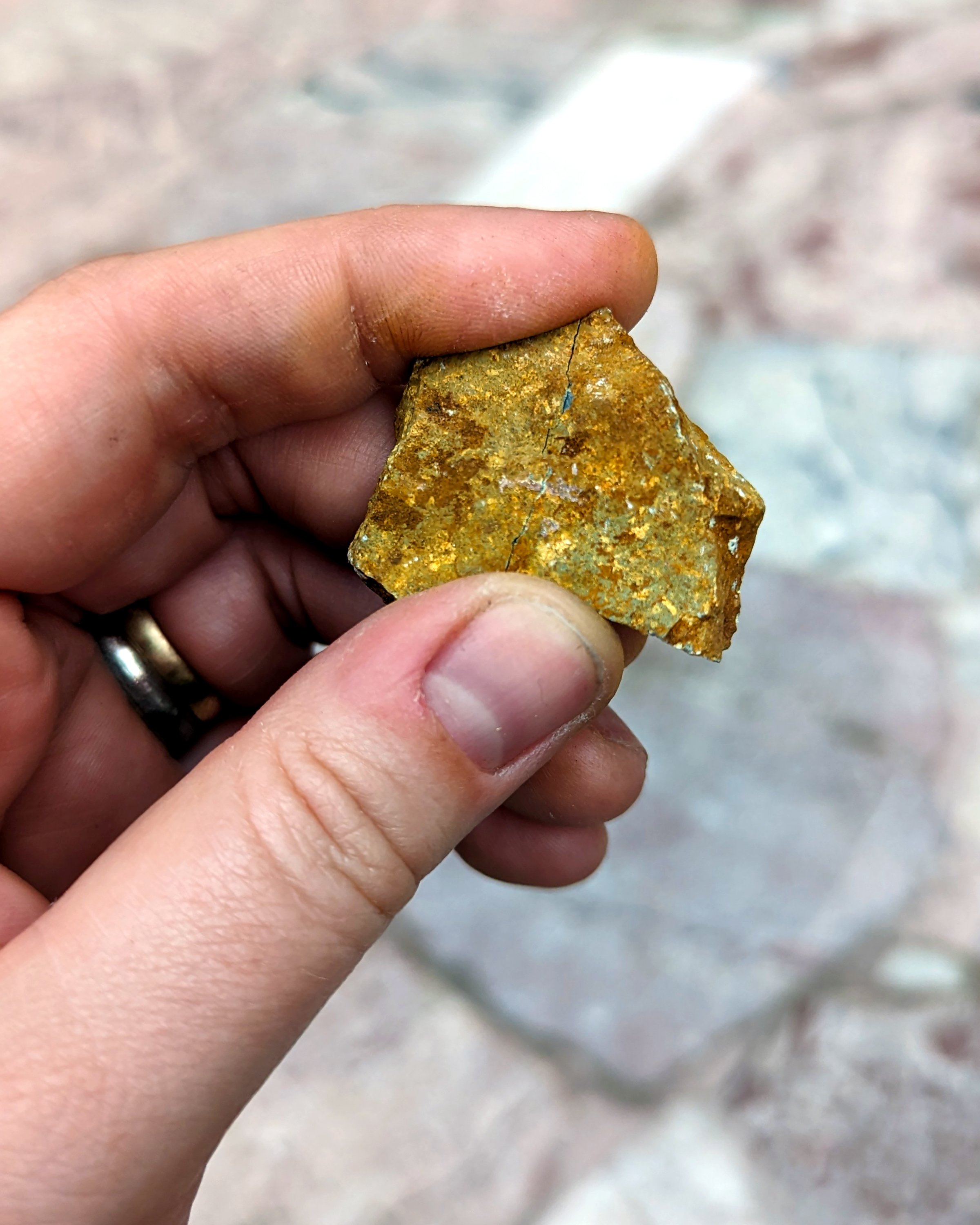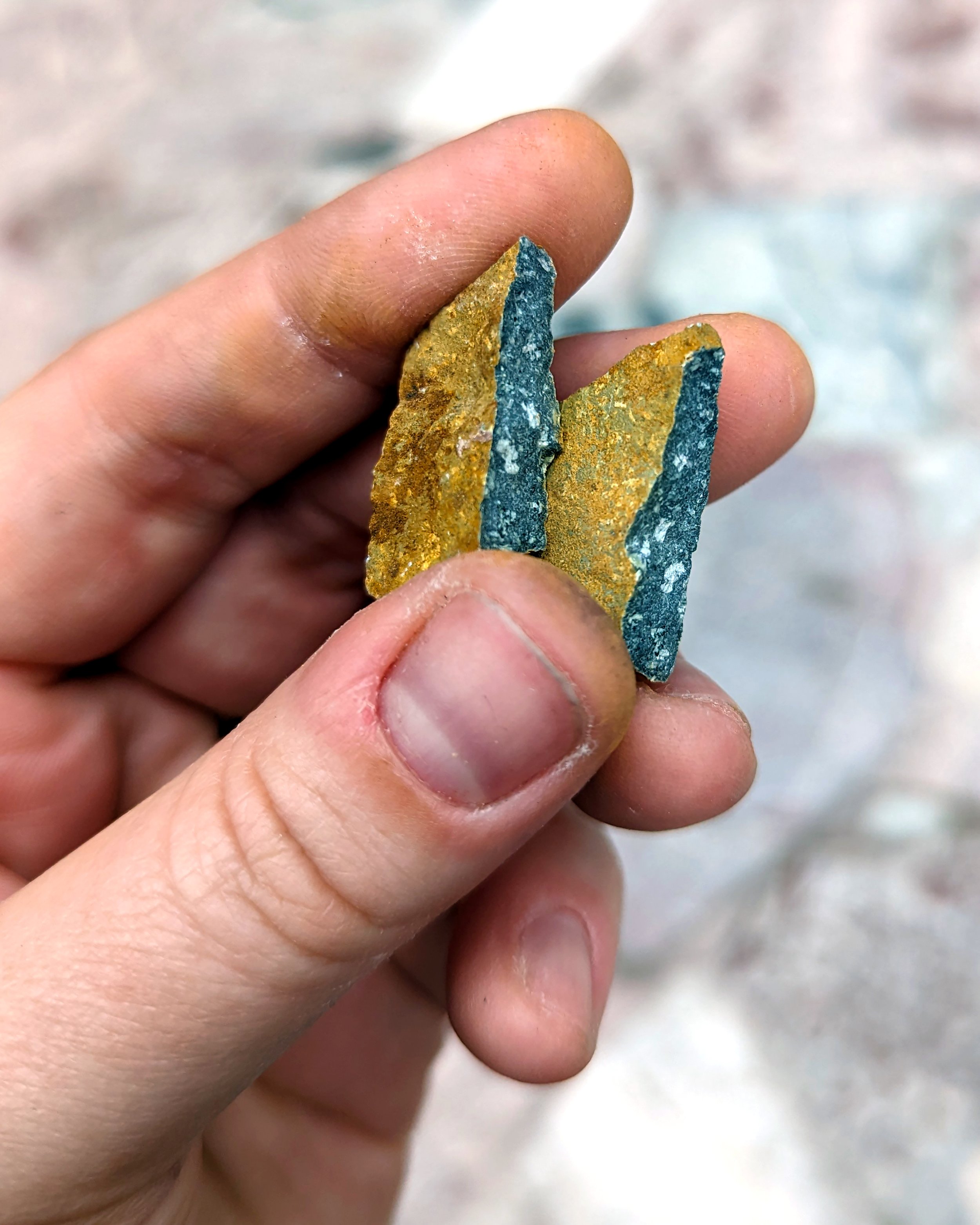I am writing this from our glass kitchen table in Santiago, Chile. February, midsummer. It’s hot, dry, and the sky is hazy from all the fires happening throughout the country. The oscillating fan is really keeping me going. From our balcony, I see Cerro San Cristobal and part of the Andes. The city is situated with the Chilean Coast Range to the west, the Andes Mountain Range towering to the east, Cajón del Maipo (aspiring UNESCO Global Geopark) to the south, and an intricate web of rivers, including Río Aconcagua, spanning over the mountains with pigment-rich basins to the north, and all around. To say that we are in the middle of a spectacular geological hotbed is no exaggeration, and is certainly no accident. We bid farewell to the swamps and prairies of our dear Chicagoland for a number of reasons, living amongst rocks being high up on the list. With rocks come colors, with colors come pigments, and that’s really where it all starts and ends for me.
Embalse el Yeso in Cajón del Maipo, central region of Chile
One of the most common questions I am asked is some variation of: How do you know if a rock will make a pigment? (Aaand we have a title, folks) It’s always asked a bit sheepishly, barred with some abdication of intelligence… my answer? I kind of don’t. I do have an idea of what I’m looking for, I do have some chemical and geological knowledge to hang things on, I do have some basic tests I perform in the field to evaluate if something will make a good pigment. But do I know? No. The ground beneath our feet is a complex system of material comprised of swaths of minerals and organic matter spanning back through millions of years of activity that serves as a literal record of time and portal through natural and human history. So no, I don’t know, not really. But I will share some knowledge and a bit about my own practice with pigments, and in doing so, I promise to only drag you partway down the rabbit hole of wonder, reverence and deep time.
A prevalent misconception is that a given rock, stone, layer of sediment, or soil is just one thing. Oh, it’s clay. It’s hematite. It’s quartz. More often than not, rocks are a combination of many unique mineral components wrapped into one. This is the case for soils too, though they are in an unconsolidated (loose) state, and also include decomposing organic matter, micro-organisms, and other fun stuff. Those complex systems of material as records of deep time I mentioned? This is it. Whether it be rock or soil, solid or loose, it is in these mineral combinations that we find earth pigments, or ochres. Don’t get me wrong, there are pure minerals that come from the earth that are used as pigments, too. Think malachite, azurite, lazurite, orpiment, realgar, cinnabar, etc. Classic beauties. For many of these minerals to function as the bright, luminous pigments we know them to be, the colored mineral absolutely needs to be separated out from the clays, chalks, and other ‘impurities.’ That’s my favorite thing about earth pigments: we get to keep it all. All the minerals. The whole story.
Okay, time to circle back to that basic chemistry and geology I promised. As we’ve established, earth pigments are a combination of minerals working together. There are the minerals that impart color, such as hematite (iron oxide, bright red through purple), goethite (iron oxide hydroxide, pale yellow through brown), glauconite or celadonite (iron potassium phyllosilicate, green range), and magnetite (magnetic iron oxide, gray brown and black). Then, there are accessory minerals such as kaolin and other forms of clay, calcium carbonate and other forms of chalk, that often impart a softer texture. This is by no means an extensive list, but rather a loose framework. When I’m in the field collecting colors, the two main things I try to determine is whether the material has a strong color, and if it’s soft enough for me to work with without breaking myself in half. (Please be warned that the next section contains super highly scientifical information that may be difficult to make sense of– good luck)
Steps of evaluation for whether a pretty rock will make a pigment:
1. Scrape it against another, preferably harder, preferably darker colored, rock. Does it make a white or colorless scratch, or does it make a mark that matches the color of said pretty rock? If the mark imparts even a hint of color, proceed to step 2.
Earth colors spit tested on a darker colored rock
2. Now for the spit test. Here, we’re judging both the intensity of the color, and also starting to gauge the softness. Take the same darker colored rock from step 1, and spit on it. Rub the pretty rock against it, and see if it blossoms into more color. (Pro tip: look at the color when your spit dries, too, because it’ll appear differently). If this step reveals even more color, that means it probably can be made into a pigment, and also that it’s at least somewhat soft. But how soft, you ask? Proceed to step 3.
3. Hit your pretty rock against another rock, maybe a few times, safety goggles highly recommended. Does it seem like you can break the pretty rock easily, or is it really hard? A hard rock doesn’t mean a weak pigment, but it just means you’ll need to add a lot more elbow grease to an already laborious process.
4. Watch out for fool’s pigment! (I just made this up, but I stand by the term) Sometimes, you’ll come across one rock parading as another, it may be coated in color from the soil, but be an entirely different rock on the inside. Something about books and covers…
5. Remember that materials coming from a ‘natural’ source does not mean they’re ‘safe!’ Minerals can contain heavy metals, silica, asbestos, and other components that can be dangerous to breathe and handle, and personal protective equipment is highly recommended.
Every time we work with the earth, we are taking a piece of the history that it holds and exchanging it with a piece of ourselves. There’s a group of pigment researchers here in Chile called ‘Colores del Aconcagua,’ and I have had the pleasure of communicating and connecting with a few of these inspiring women. They published a book of their research titled, Colores Minerales: Identidad Cultural de Nuestro Territorio, which has been a huge asset to me as I conduct my artistic research here. In their book, they pose the question “¿Extraemos o recolectamos?” “Do we extract or collect?” So simple, so poignant. I use this question as a guiding principle of my pigment practice. Am I taking by force or gathering with love? Just as every person chooses the values that guide their life choices, every practitioner chooses the ethics and parameters that dictate their artistic decisions. And me? I choose to follow the rabbit hole into wonder, reverence and deep time, to examine each layer, to listen to the whole story.
Me foraging for a violet-brown color tucked away in this earthy slope (in Chile)
For more information on reciprocal foraging and foraging health and safety, check out these helpful guidelines written by Wild Pigment Project.





